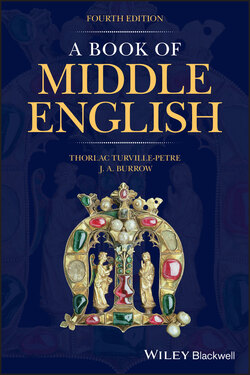Читать книгу A Book of Middle English - J. A. Burrow - Страница 96
8.3 Dictionaries
ОглавлениеWork began on the Oxford English Dictionary in 1857 under the editorship of James Murray. What was then envisaged as a ten‐year project was finally completed in 1928, published in ten huge volumes as A New English Dictionary on Historical Principles (NED). Five years later the dictionary was reprinted with a supplement, and renamed the Oxford English Dictionary. Four more supplements were published between 1972 and 1986. An integrated and much expanded second edition was published in twelve volumes in 1989. From 2000 the OED has been available online to libraries and other subscribers at http://www.oed.com/. Entries are being progressively revised, with the date of the revision stated. It follows that, while many of the entries include up‐to‐date material, others are essentially as they were compiled in Victorian times. OED aims to give a complete history of a word, though Old English words are only recorded if they survived into Middle English.
The first fascicle of the Middle English Dictionary was published by the University of Michigan in 1954, and the dictionary was completed in 2001. MED is now available freely online at https://quod.lib.umich.edu/m/middle-english-dictionary/dictionary. It covers texts composed between about 1150 and 1500. The Middle English citations in the OED formed the nucleus of the collection, but the MED, which runs to 115 fascicles and 15,000 pages in its print edition, is a much more comprehensive record of Middle English than the OED.
The electronic editions make piecemeal revision possible, and furthermore they are much easier for the reader to use and explore. The wide variation in spelling in Middle English means that finding a word in the print edition of MED can be a bit of a challenge, but the online version allows a search of any of the headword forms, so that a search for stought (or even the misspelling strout) will come up with the entry for stout(e. Alternatively, if one knows the modern form of a word, the OED entry provides a link to the MED. Definitions of a word are ordered in an attempt to show its semantic development, though this is not always clear. Thus sense 5 (a) of stout(e in MED is given as: ‘Of a person, an animal: strong, sturdy’. As an instance of this is the following quotation is cited:
a1425(c1385) Chaucer TC (Benson‐Robinson) 5.1454 : His drem he tolde hire er he stente, And hire bisoughte assoilen hym the doute Of the stronge boor with tuskes stoute.
This gives first the approximate date of the manuscript chosen, a1425, i.e. before (ante) 1425, and then in brackets the date of the composition of the text, circa 1385. The text is identified as Chaucer’s Troilus and Criseyde, as in the Benson–Robinson edition, i.e. The Riverside Chaucer, book 5, line 1454. Clicking on the bibliographical reference brings up a new page with a mine of information on the manuscripts of Chaucer’s poem, their dates, references to dialects as determined by LALME, editions and facsimiles, as well as external references to the poem in various indexes such as The Digital Index of Middle English Verse. The format in OED follows a similar system, explained in detail at https://public.oed.com/blog/dating-middle-english-evidence-in-the-oed/.
